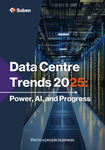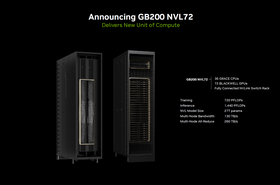Brookfield Infrastructure Partners remains positive about the outlook for the AI data center sector despite the emergence of DeepSeek’s open-source large language models.
The asset manager, which owns and operates a number of data center brands, as well as other infrastructure assets, enjoyed a bumper 2024, reporting revenue of $21.03 billion, up from $17.93 billion in 2023 when its financial results were published on Thursday.
Its results were released days after Chinese firm DeepSeek sent waves through the US stock market with the release of its open-source LLM, which offers comparable performance to the systems produced by top US AI labs, but which was reportedly trained using a fraction of the compute power.
This has led to many question whether the growth of the digital infrastructure sector, which has been spurred by the AI revolution, may be about to grind to a halt.
But speaking to investors on the company’s earnings call, Roberto Marcogliese, Brookfield’s managing partner for infrastructure and head of data for the Americas, said his company had anticipated such a breakthrough.
Marcogliese said: “We never really expected that demand for compute would scale on a straight line basis. Our expectation, as we've seen a number of other technologies, is that we will always see a level of continuous improvement, whether it's at the server and hardware level or at the software level.”
He added that the company believes these improvements will “be offset by new use cases” with more complex needs, such as robotics, which will require more compute.
“The DeepSeek announcement, from our perspective, is really just a piece of that improvement puzzle,” Marcogliese added. “We expect more advancements to come as we're still in the very early innings of this technology cycle.
“Over the long term, I would say our positive outlook hasn't changed for data center demand growth.”
Brookfield Infrastructure’s data center portfolio includes DCI Data Centers in APAC, Data4 in Europe, and Compass Data Centers in North America, among others.
Digital infrastructure currently represents a small part of its portfolio, with most of its funds tied up in utility and transport investments.
However, CEO Sam Pollock said this could change in the next few years, with digital infrastructure deals accounting “for over 40 percent of our anticipated capital deployment.”
“We expect growth in this sector to persist outpacing all other areas of our business and positioning it to become our largest sector within five years,” Pollock said.




